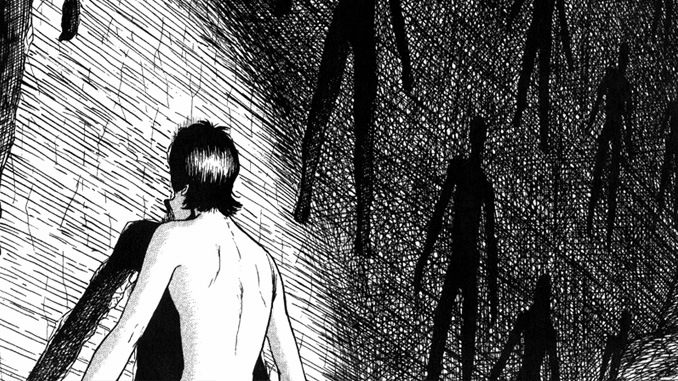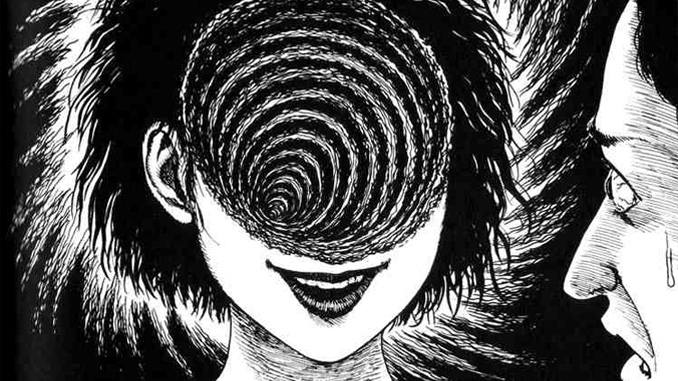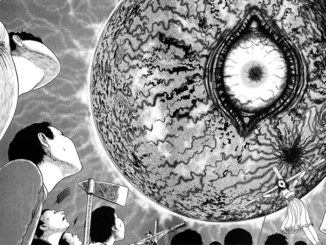
For a werewolf, we know that silver bullets can stop it. For a vampire we know that sunlight and a stake through the heart can stop it. These explanations of dealing with these particular threats came with the introduction of their respective legacies. Understanding the logic of a paranormal entity in a film like The Ring or The Conjuring keeps them at bay in our minds. But how do you stop an abstract concept that is given no explanation as to being?
This is the kind of horror that I find myself returning to again and again. Whether it be Eraserhead, the body horror films of David Cronenberg, The Thing, H.P. Lovecraft, or in the topic I will talk about now: Junji Ito.
The world of Junji Ito is something to behold. There is a constant sense of unease. Something creeping just behind the next few pages waiting to meet you. Horror has had a history of relying on jump scares. Something that is as novel as the movie saying “Use once and discard” at every jump scare moment. Ito’s work however draws on obscene body horror and existential dread. This inevitability of horror. A number of his best known works deal with the theme of being compelled by an abstract object or an idea.
Take for example, “The Enigma of Amigara Fault“. In it, an earthquake exposes human sized absences in a cliff wall. People from across Japan are drawn to the holes and convinced they are shaped specifically to them. They are compelled to climb into the hole and are slowly sucked in. What Ito does is take a concept like that and stretch it to its most interesting lengths.

No other example can be more fitting as to that, than his most well known work: “Uzumaki”. While being adapted into a film in 2000 by Higuchinsky, it’s true power lay in its manga format. “Uzumaki” was the first manga I read and if you’re not familiar with the layout, the content is read from back to front and the panels from right to left as opposed to the way normal books are read. It’s a manga where Ito takes the concept of a town being obsessed with spirals and divides it up into multiple vignettes throughout the town. Connecting these vignettes is the character of Kirie, whose father’s obsession with spirals in the very beginning of the book leads to weird contortions of his body.
Junji Ito, like Lovecraft- a man who influenced his work- deals in grand concepts of horror. Ones that we may not always get explanation as to why they exist. The more complicated or complex a narrative can become, the greater the need for a way to rationalize it. What the works of Ito ask is what do we do when confronted with a geometric shape that drains your energy and compels you to obsess over it? Or why the futon has a strange texture that is affecting a man’s behavior? Why are floating heads appearing above the town with nooses dropping down from them?
It is these questions Ito’s narratives force us to ask that outline the basis for great horror: fear of the unknown.


Be the first to comment